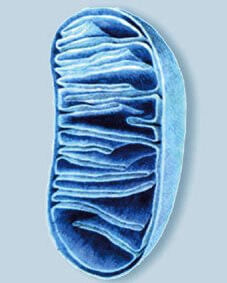Long slow distance, threshold and sweet spot work, high intensity intervals, micro-intervals; what's best for your cycling fitness? The answer is there is no one size fits all training method. A training program should rather be a strategy built around racing/fitness goals, alternating stresses, specificity and rest. The main goal of training is not getting to ''x'' watts at Functional Threshold Power (FTP) or whatever duration you like. The aim of a proper training plan should be to induce adaptations to improve performance for a given event. Since we're speaking of cycling here, adaptations will mostly be aerobic, either peripheral (skeletal muscle) or central (heart mecanism, blood circulation and respiration). This post will focus on a major peripheral adaptation found in the working skeletal muscle composition and molecular activity.
We hear a lot about mitochondria related adaptations, be it for their size and/or density. Mitochondria are the factories of skeletal muscle. They process nutritents and turn them into useable energy (ATP) to produce work that will result in an ouput, in our case, a power output that will make you travel a given distance on your bike and/or will make you travel that distance faster with a given perceived exertion. More mitochondria means more power, less exertion and/or more distance traveled. That is why this specific aerobic adaptation is important for cycling performance. How do one increases his mitochondria density and/or size?
Our little friend, the mitochondrion
LSD
There are plenty of ways to induce such adaptations but I want to focus on a particular way to acheive it: long distance riding. I thought this would be appropriate since I am in the middle of a high volume riding week. Its been argued a lot but evidence shows training a lot of hours in term of volume and frequency is a very efficient way to induce mitochondria biogenesis. The intensity should generally be below the first ventilatory threshold, which happens around 2mmol blood lactate concentration. Its a typical endurance pace, nothing hard but simply producing a moderate amount of work for extended durations.
How it happens?
Long distance riding involves repeated low energy muscle contraction over a significant period of time. These muscle contractions repeated thousands of time create a rise in the level of intramuscular calcium, which is a mineral playing a major role in muscle contraction mecanism. This unusual calcium concentration activates an enzyme called Calcium Modulin kinase (CaMK) which in turn stimulates an activator called PGC-1alpha. The latest is known to be a major cell signal that promotes mitochondria biogenesis and it is refered to as the ''master-switch''.
What does it mean?
Riding at easy to moderate intensities for long periods of time will produce the physiological effects described above. This kind of high volume training has a lot of additional benefits we did not spoke of in the article. Though this approach is not for everyone. An athlete needs to consider his available training time, experience and goals. I would not recommend such a training approach for someone working on a sub 12hrs weekly training regime. I would not recommend to base one's training solely on that approach either. I am not sure where we can set the benchmark for ''long rides'' but I think 3,5hrs would be a minimum to acheive optimal training adaptations using this kind of approach. Frequency should also be considered, as one 4hrs ride per week wont be as effective as multiple long rides.
As with everything else, this should be considered cautiously. There is no ''one size fits all'' training method and everyone is different. A whole lot of other variables also come into play and proper planning of rest and recovery should be taken very seriously with any type of training regime.

No comments:
Post a Comment